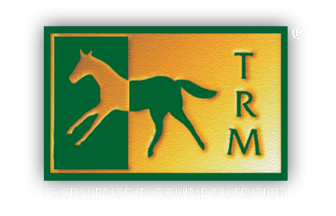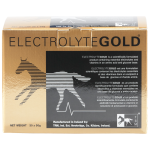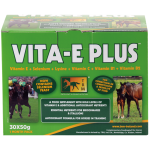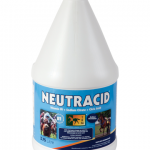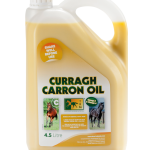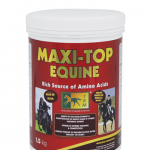When Every Morning, Feels like Monday Morning
With current restrictions on movement during the Covid 19 pandemic it can seem like every morning is Monday Morning for us humans. But unfortunately Monday morning disease or Equine exertional rhabdomyolysis (ER, also known as tying up or azoturia) is no joke for our horses who may also be experiencing restricted movement.
The above are all names of common muscle metabolism problems that can be attributed to a number of factors:
- Genetic predisposition.
- Poor physical conditioning.
- Poor circulation to muscle tissue.
- Over conditioning which increases the amount of glycogen stored in the muscle.
- High energy intake, particularly from cereal.
- Failure to begin physical activity slowly.
- Over training.
- The work of a horse after a period of rest, if the concentrate ration was not reduced.
- Electrolyte or mineral imbalances.
- A deficiency in selenium or vitamin E.

It is particularly common in a horse that is box-rested without properly cutting back the feed at the same time, or one that is overfed for the amount of work it is doing. A useful adage is always to increase the workload before increasing the feed. ER can transpire when exercise routine is erratic, suddenly dropped of and then picked up again to quickly. Some horses, especially excitable young fillies, seem more prone to tying-up, but it is also more likely to happen in any horse that is over fed and under worked.
Regardless of its pathogenesis, exertional myopathy most commonly occurs within a few minutes to an hour after beginning exercise following one or more days of rest, particularly when a high grain (greater than 40% of total diet) has been fed and the horse has had little or no exercise. In mild cases of exertional myopathy, there may be only a slight post-exercise stiffness, a shortened stride, or change of gait. In more severely affected horses, muscle cramping and tremors occur. The largest muscle masses are generally the most severely affected and are stiff, swollen and painful to touch. Although it is usually the gluteal and thigh muscles that are affected, the forelegs alone or in combination with other muscles maybe involved. Due to pain, affected animals often have a tucked-up appearance, sweat profusely, have a stiff stilted gait, and are reluctant or unable to move. Muscle tremors, elevated heart and respiratory rates as a result of the pain can also occur.
Regular exercise is important if your horse is prone to tying-up. Some horses can be working every day, but if they just do a little less on one day, that’s enough to trigger an episode the next day. Turning horses out for as long as possible helps, as does a period of walking exercise before being ridden.

ER occurs when there is an inadequate flow of blood to the muscles of an exercising horse. The muscle cells, lacking in oxygen, begin to function anaerobically to produce the needed ATP. The anaerobic work creates a build-up of waste products, acid, and heat. This subsequently alters the cell by preventing the cell’s enzymes from functioning and the myofilaments from efficiently contracting. The cell membranes may then be damaged if the horse is forced to continue work, which allows muscle enzymes and myoglobin to leak into the bloodstream. If signs of ER are seen, the horse should not be moved. Movement can cause further muscle damage.
Muscle enzymes such as AST, LOH and CPK may be elevated in the blood due to muscle damage. Although CPK and AST elevations are proportional to the degree of muscle damage, they do not always reflect the severity of clinical signs. Myoglobin is typically excreted in urine. If sufficient quantities are excreted, it gives the urine a coffee-coloured appearance.
Treatment depends on the clinical severity but it aims to; a) limit further muscle damage b) decrease pain and anxiety c) restore fluid balance d) implement feeding and management practices to try and prevent a recurrence.
FEEDING AND MANAGEMENT ADVICE:
1. Antioxidants
One of the best procedures to initiate, is the supplementation of antioxidant nutrients; vitamin E, vitamin C and selenium. Supplementing antioxidants is beneficial for both the treatment and prophylaxis of this multi-factorial condition. At the very least, it is very important to feed antioxidant vitamins after an episode of exertional rhabdomyolysis, to assist in the repair of damaged muscle tissue. It is good management practice to feed antioxidant nutrients to all horses in training for their ‘muscle protecting properties’.
2. Forage
The major proportion, if not all of the daily feed intake should be forage, either fresh pasture, hay or hay equivalents. It is preferable not to feed large quantities of alfalfa or legume-rich hays (as they are very energy dense).

3. Turn – Out
Do not turn horses’ out into lush fast-growing pastures. It is important however, to initiate a program of daily turn-out in a sparse paddock for recurrent sufferers.
4. Hard Feed
If energy needs are not being met in individual horses by just forage alone, then supplement their diet with a high fibre / low carbohydrate concentrate mix.
5. Supplemental Oil
Alternatively, supplement their diet with an oil or fat. Anywhere in the range of 10 – 20% of total diet is the ideal for sufferers. Supplemental oils are very beneficial in the management of this syndrome as fats/oils do not lead to a build-up of stored muscle glycogen. It is very important to note that antioxidant nutrients must be fed in combination with supplemental oil to counteract oxidation damage caused by rancid oils.
6. Electrolytes
Electrolytes are very important in neuromuscular function. It is very important to ensure that all horses in training receive an adequate and balanced supply of sodium, calcium, chloride, potassium and magnesium.
7. Exercise
Initiate a regular exercise program without any complete rest days. Ensure the horse is adequately warmed up before hard work. If daily exercise is not possible, horses should be turned out for as long as possible (remembering to avoid lush pastures) on rest days and any complementary feed reduced (halved) from the evening before until the evening afterwards.

